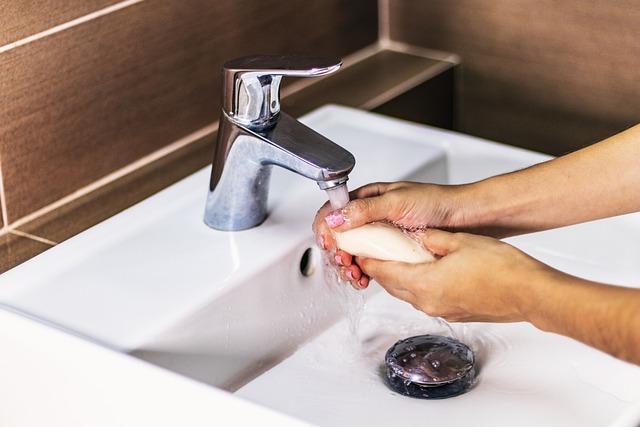Black mold, caused by Aspergillus, requires safe alternatives to chemical cleaners. Tea tree oil, with its antimicrobial and antifungal properties, is a popular natural solution. Effective against mold spores, it's easily accessible and can be diluted for application. However, direct contact or inhalation may cause irritation, so proper dilution and ventilation are essential for safe use in natural mold removal.
“Discover a potent ally in the battle against black mold with tea tree oil, a popular and effective solution for natural mold removal. This essential oil has long been recognized for its antimicrobial properties, making it a promising alternative for those seeking safe and non-toxic methods of remediation. In this article, we explore the science behind tea tree oil’s antifungal abilities, practical application tips, and safety considerations to empower you with knowledge for effective black mold elimination.”
- Understanding Black Mold and Its Impact
- Tea Tree Oil: A Natural Antifungal Agent
- Effective Use and Safety Measures for Tea Tree Oil in Mold Removal
Understanding Black Mold and Its Impact

Black mold, scientifically known as Aspergillus, is a type of fungus that thrives in damp and dark environments. It’s important to understand its impact on human health and structures alike. Exposure to black mold can cause a range of issues, from mild allergies and respiratory problems to more severe conditions like neurological damage and immune system suppression. This is especially concerning in homes, schools, and workplaces where people spend significant time.
While chemical-based cleaning agents are common for natural mold removal, many seek safer alternatives due to concerns about their health effects. Tea tree oil, known for its antimicrobial properties, has emerged as a potential solution. As a popular essential oil with a history of use in traditional medicine, tea tree oil offers a natural mold removal approach that’s gaining traction among those prioritizing wellness and environmental safety.
Tea Tree Oil: A Natural Antifungal Agent

Tea Tree Oil, derived from the leaves of the Australian tea tree (Melaleuca alternifolia), is renowned for its powerful antimicrobial and antifungal properties, making it a popular natural mold removal solution. Beyond its well-known effectiveness against bacteria, research has highlighted its potential to combat various fungal strains, including those that contribute to indoor mold growth. This unique characteristic stems from the oil’s active compounds, such as terpinen-4-ol, which have demonstrated the ability to inhibit and eradicate mold spores.
As a natural mold removal option, Tea Tree Oil offers a safe and environmentally friendly alternative to conventional chemical remedies. Its ease of use and accessibility make it an attractive choice for homeowners seeking effective yet non-toxic solutions to combat black mold. When used appropriately, diluted tea tree oil can be applied directly to affected areas, creating an inhospitable environment for mold growth while promoting a healthier indoor living space.
Effective Use and Safety Measures for Tea Tree Oil in Mold Removal

Tea tree oil, a potent essential oil known for its antimicrobial properties, has long been touted as a natural remedy for various ailments. When it comes to black mold removal, this natural compound can be an effective ally in your clean-up efforts. Its ability to inhibit and eliminate mold growth makes it a popular choice among those seeking eco-friendly solutions for their homes.
However, while tea tree oil is a powerful tool, safety measures must be taken during its use. As with any essential oil, direct application on the skin or inhalation can cause irritation. Always dilute tea tree oil with a carrier oil before using it topically, and ensure proper ventilation when working with it to avoid respiratory discomfort. For moldy areas, mixing a few drops of tea tree oil with water in a spray bottle creates a safe, natural cleaning solution for application on surfaces. This method allows you to effectively employ the oil as a natural mold remover without exposing yourself to potential risks.
